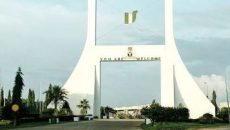Other countries have used the Land Swap Initiative to build critical infrastructure at various times in their history
The Federal Capital Territory, FCT, is not the first government to formulate the land swap policy. Research showed a litany of governments that have resorted to the initiative to fund critical infrastructure over the years across the world. Indeed, the land swap model has been successfully tried in both developed and developing countries to fund three categories of urban infrastructure.
For instance, the iconic tower in the United Kingdom, UK, called the Shard of London was built through land swap. It was formerly known as the London Bridge Tower. It is an 87-storey skyscraper that forms part of the London Bridge Quarter development. The Shard’s construction began in March 2009 and was completed in November 2012. Standing approximately 306 metres (1,004 ft) high, the Shard is the tallest building in the European Union. It is the second tallest free-standing structure in the UK, after the concrete tower at the Emley Moor transmitting station. The glass-clad pyramidal tower has 72 habitable floors, with a viewing gallery and open-air observation deck on the 72nd floor, at a height of 244.3 metres. It was designed by the Italian architect, Renzo Piano and replaced Southwark Towers, a 24-storey office block built on the site in Southwark in 1975. The Shard was developed by Sellar Property on behalf of LBQ Ltd and is jointly owned by Sellar Property and the State of Qatar.
Similarly, New York’s greater era of city building after the Civil War leveraged on a variety of land swap. The city was expanding up Manhattan Islands and needed new streets, more water distribution, sewage collection and mass transit systems. Shantytowns were demolished for urban renewal. New York’s municipal debt tripled between 1867 and 1871 as it borrowed to finance public infrastructure. As an alternative to borrowing, Boss Tweed, then commissioner of public works, used land-based financing for a private sector development of the entire block bounded by Fourth Avenue, Madison Avenue, 68th Street, 69th Street and installation of the city water supply without any financial liability to the municipal authority.
In the same vein, after the World War II, Britain used the land for infrastructure concept to develop 25 new cities by internalising land development and infrastructure installation. Egypt and India successfully utilised the model to develop new towns. Denmark used land swap to develop Orestad, a new town outside Copenhagen, developed with urban infrastructure including a 22-kilometre automated metro serving about 60 million passengers a year at a cost of $2.75 billion.
Likewise, the reconstruction of Paris in 1852 used the land swap model. It was a complex mix of boulevards, massive infrastructure of roads, water and sewage lines, including multiple aqueduct systems, one of which delivered water from sources 600km distance. The infrastructure cost was F2.5 billion, over 44 times the annual budget of Paris in 1851.
The funding of the World Trade Centre in New York is also a land-based funding concept. The Port Authority of New York and New Jersey executed a 99-year leasehold in favour of Silverstein Properties Inc. at a total cost of $3.2 billion. It used the revenue to finance urban transportation projects throughout the New York metropolitan area.
These are not all. China utilised the land swap model to reconstruct the Outer Ring Road encircling the region around Changsha, the capital of Hunan Province in central China. The same also holds for the new Greenfield airports in Bangalore and Hyderabad as well as the modernisation and expansion of existing airports in the cities of Chennai, Delhi, Kolkata and Mumbai, all in India. The total investment in the China project was about $750 million, while India’s airport modernisation drive chaired by its prime minister in 2006 totalled about 40,000 crore (about $10 billion). The Republic of Turkey used land swap to raise $1.5 billion for its capital investment budget in Istanbul to transform an abandoned central bus station in 2007.
Even African countries have been accessing the land swap option to achieve developmental goals. Egypt used land financing to develop 20 new cities with 44 additional sites already identified for new settlement construction. It resulted in the development of Medinaty City in New Cairo, which gave Alexandria Company a total of 3,360 hectares of land for real property development. In exchange, the company was to install internal and external infrastructure in the entire area at a cost of £E237 per square metre and supply low income housing units to the tune of seven per cent of development cost. The Reliance Group in India is developing an Industrial Park in Mumbai at an estimated infrastructure investment cost of $62 per square metre.
Back home in Nigeria, the land based financing variants have been in use too. It was used in the rehabilitations of terminals in Apapa port by Flour Mills Plc and those of Onne port terminals by the duo of Intels Limited and West African Continental Limited at the cost of over $300 million through a programme of amortisation.
A research by AIIC showed the peculiarities of each country and the similarities depending on their respective land tenure system. In China, there is ownership of land and municipal authorities are only entitled to acquire excess land from owners. Similar scenario exists in India except that in some places like Bangalore, land could be acquired for public private partnership projects. Otherwise, acquisition by public authorities for land swap projects is on the basis of market rate principle. In a number of cases, these two countries often rely on the power of Eminent Domain to acquire land at low prices. In other words, these countries had to buy land from its people at commercial rates and then turn it over to the private sector.
In places like Egypt however, where desert land is vested in the government, the issue of market rates in the development of its new cities does not arise. Dubai, Abu Dhabi and Saudi Arabia were able to achieve significant modern real property development on the platform of free land collaboration with the private sector. Nigeria, like the Middle Eastern countries, also has sprawling desert areas that belong to no one.
The Federal Capital Territory Administration considered the type of land-based financing most suitable in Nigeria. There was the sale of development rights as practised in Sao Paulo in Brazil where a developer was allowed to change the land use to recover his investment or the more ambitious Orestad experience in Denmark where the 22km metro line was included in the infrastructure deliverables by the private developer. There was also the Valorisation programme in Cali, Columbia, that hoped to raise $240 million from individual properties for roads and bridges improvements or the 1997 Betterment levy in Bogota, which got more than $1 billion for municipal public works or the Impact Fee System in Phoenix, Arizona, that levied property owners the sum of between $11,349 and $31,622.
There were also the simple concepts on the table. Is it the Chinese Land sale concept that built a highway in Hunan province similar to a Property swap for a waterfront hotel development in Connecticut, USA, or the Turkish Land Auction approach in the transformation of an abandoned central bus station in Istanbul or even the Egypt’s latest reform in its stride to build the Medinaty City in New Cairo?
Having examined all these variants, the FCTA considered the modern land swap model more realistic. It takes the best in all the previous models, avoiding their pitfalls.
Follow Us on Social Media






 WhatsApp us
WhatsApp us